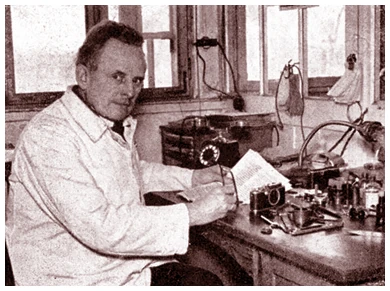Prior to the invention of cameras, in order for pictures to be produced to convey a message, artists had to sketch up interpretations of an event to be published, leaving room for the artist’s biases within the image and were very time-consuming. This held issues when developing news articles because it took such a lengthy amount of time to produce images that didn't directly reflect what had happened. This is where the evolution of cameras began.
In the year of 1924, a German individual named Oscar Barnack designed the first module of the Leica 35mm camera. A year later it was released to the public where it became a success in changing photography as a whole. In the article, The Leica I: The Camera that Changed Photography by John Wade, he explains the transition from “glass plates to be used in cameras, and those that took roll film were thought of as miniatures. So imagine the culture shock when a still photography camera was produced to take 35mm movie film.” Which is exactly the impact it had on the public when the camera was readily available to them. These cameras were handheld and allowed for easy transportation that took high-quality photographs.
 |
| Oscar Barnack working on the Leica, Photo By: Unknown |
In Professor Nordell’s video, Before There Were Pixels Part 1, he describes the above referenced “glass plates” and explains the hardships that individuals endeavored when going out into the field to record “photographs” outside a designated studio occurring in 1851. He explains the process of utilizing wet glass plates as the primary source of recording pictures as “there were glass plates in that whole van/wagon you’d put different chemicals on that glass plates and while they were still wet put them in the camera, take pictures, and then immediately put those plates back into the chemicals to process them to make them into useable photographs.” This process was called the wet collodion process and it entailed 8 important steps to creating these images. Two key features to this technology are explained in The Getty Museum video as allowing “photographers to use finely detailed images on paper and to print an unlimited number of copies.”
Then to a huge advance to the Leica camera, which used 35mm film that allowed an individual to take from 24-36 pictures. As Professor Nordell explains the Leica camera in his video, Before There Were Pixels Part 2, “more surreptitious” allowing for the picture taken to be hidden. The advancement in this technology allowed a more convenient and easier way to photograph events that were occurring in real-time. From there, the timeline continues in advancements in technology. Since the Leica 35mm camera, there have been major advancements in technology in regards to cameras and how easily accessible they are. In today’s society, there are extremely high tech digital cameras that have many different lenses that could be bought to assist in taking very clear pictures from a very short or far distance. Also, cameras are within people’s fingertips on the daily with cell phones. These cell phones hold many different editing applications that can assist the photographer adhance the photograph in any way. Cell phones are constantly adding more advancements in their camera technology to appeal to consumers and allows for photography to be exchanged on a daily basis without any expertise in photojournalism.
Below is an image I took of my dog, Luke using my iPhone 6s:
(Notice the difference in color and clarity of this photo compared with the photo of Oscar Barnack using early technology)

No comments:
Post a Comment